Disclosure: This article contains affiliate links. We may earn a commission from purchases at no extra cost to you, which helps our travel content.
When my dental conference brought me to Mumbai last winter, I found myself with a week to explore this magnificent contradiction of a city through my viewfinder. Mumbai isn't just India's financial powerhouse—it's a photographer's paradise where colonial grandeur meets chaotic energy, where ancient traditions dance alongside cutting-edge modernity. As someone who's documented cities across five continents, I was immediately struck by Mumbai's particular quality of light—soft and golden in the early mornings, harsh and revealing at midday, and positively magical during the brief twilight hours. Having spent countless hours wandering Mumbai's diverse neighborhoods with my trusty camera in hand, I've compiled this guide to the city's most captivating photography locations, from architectural marvels to hidden street corners where the real Mumbai reveals itself.
Colonial Heritage: Gateway of India & Surroundings
The Gateway of India stands as Mumbai's most recognizable landmark, but photographing it effectively requires strategic timing and positioning. I arrived at 5:30 AM on my second day, just as the first light began illuminating the basalt arch against a backdrop of dawn pastels. The early hour meant I could frame compositions without the usual crowds, though I was joined by a handful of dedicated local photographers who nodded knowingly at my carbon fiber tripod (essential for the low-light conditions).
While the frontal view is classic, don't miss the opportunity to photograph the Gateway from the water. I booked an early morning ferry to Elephanta Caves, which provided a receding view of the monument with the Taj Mahal Palace Hotel in magnificent juxtaposition. The contrast between the colonial architecture and the Arabian Sea creates a compelling visual narrative about Mumbai's maritime history.
The surrounding Colaba district offers a wealth of architectural subjects. The Taj Mahal Palace Hotel itself, with its distinctive red dome, provides endless compositional possibilities, particularly when photographed from the small garden area across the road. As a history enthusiast, I was drawn to the stories embedded in these structures—the Gateway commemorating the 1911 visit of King George V and Queen Mary, and the Taj predating it by nearly a decade, allegedly built after Jamsetji Tata was refused entry to a 'whites-only' hotel.
Wandering north from the Gateway, Mumbai University and the High Court building offer spectacular examples of Gothic Revival architecture. The key is to look for interesting angles—shooting through archways, using symmetry, or incorporating human elements for scale. These buildings are particularly stunning in the golden hour light, when the yellow basalt seems to glow from within.
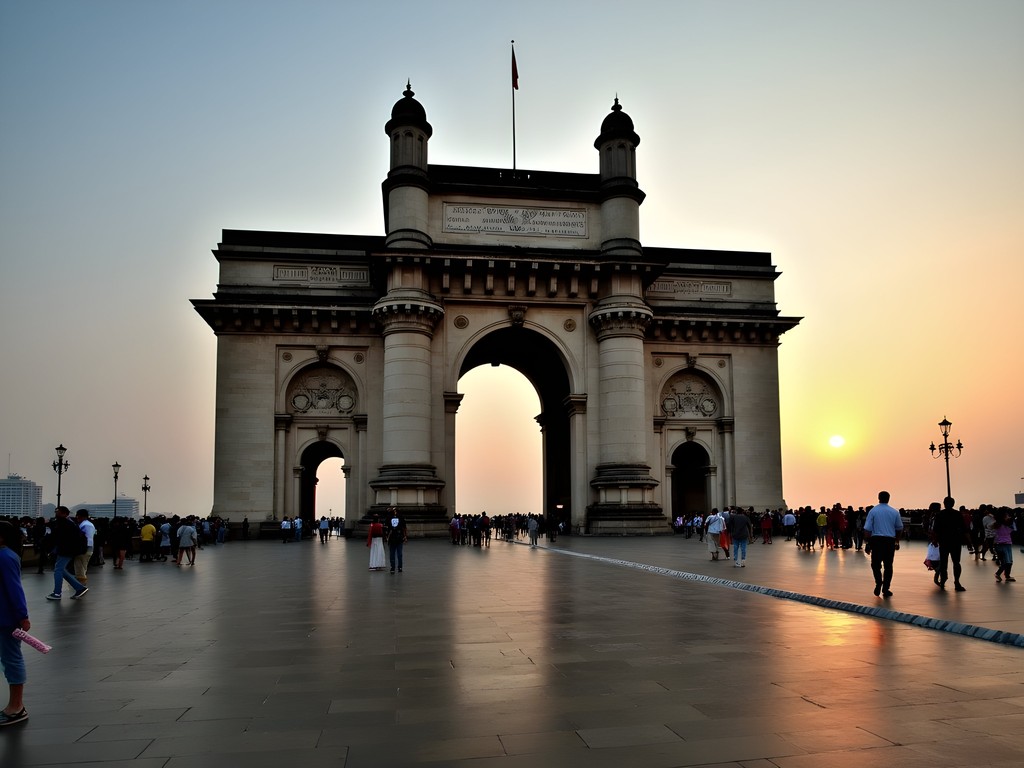
💡 Pro Tips
- Arrive before 6:00 AM to capture the Gateway without crowds
- Use a polarizing filter to manage reflections and enhance the sky
- Include local boats in your composition for a sense of place
Street Photography: Crawford Market & Chor Bazaar
Mumbai's markets offer an intoxicating sensory experience and unparalleled opportunities for street photography. Crawford Market (officially Mahatma Jyotiba Phule Market) became my favorite morning haunt, where I'd arrive by 8:00 AM to capture vendors arranging their vibrant displays of fruits, flowers, and spices. The Norman-Gothic architecture of the building itself creates a fascinating backdrop to the commercial bustle within.
After decades of travel photography, I've learned that successful market photography requires establishing rapport. I always make small purchases and engage in conversation before bringing out my mirrorless camera, which with its unobtrusive design and silent shooting mode, allows me to capture candid moments without disrupting the natural flow of commerce. The 23mm f/2 lens (35mm equivalent) proved perfect for these environments—wide enough to capture context but not so wide as to distort faces.
Chor Bazaar (Thieves' Market) presents a different photographic challenge. This sprawling flea market with its narrow lanes packed with antiques, vintage items, and curiosities is a treasure trove for detail-oriented photographers. The limited light between stalls necessitates higher ISO settings, but the resulting grain can actually enhance the timeworn aesthetic of the subject matter.
During my third visit to Chor Bazaar, I discovered an elderly shopkeeper with a collection of vintage cameras that would make any photography enthusiast swoon. When I mentioned my own journey from film to digital over the decades, he proudly showed me a remarkably preserved Rolleiflex from the 1950s. This interaction resulted in not only my favorite portrait from Mumbai but also a fascinating hour-long conversation about how photography has evolved across cultures.
When photographing people in markets, remember that direct eye contact creates a different type of image than candid shots. Both have value, but be clear about your intention before raising your camera.
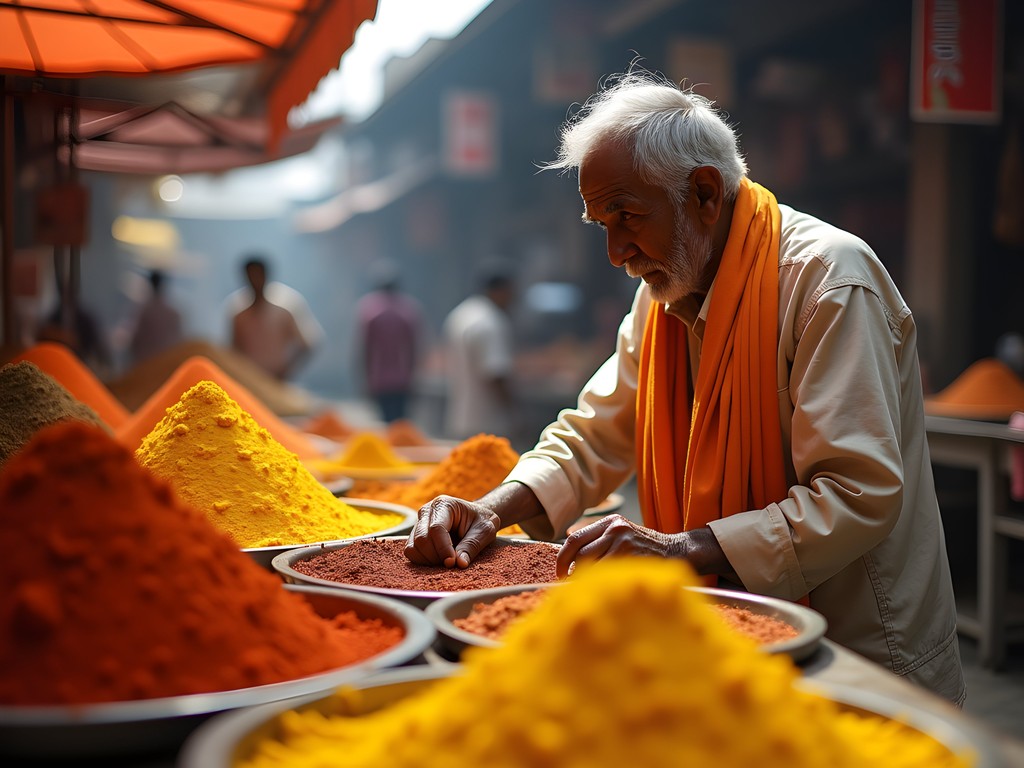
💡 Pro Tips
- Purchase small items from vendors before photographing them
- Use aperture priority mode with f/5.6-f/8 for good depth of field in market scenes
- Look for pockets of natural light streaming through market roofs for dramatic effects
Architectural Marvels: CST Station & The Art Deco District
Chhatrapati Shivaji Terminus (formerly Victoria Terminus) stands as perhaps the most extravagant railway station ever built, a Victorian-Gothic masterpiece that rewards patient observation. During my first visit, I made the rookie mistake of attempting to photograph the facade during midday—a harsh lighting nightmare that flattened the intricate details. Returning at blue hour the following evening revealed why CST deserves its UNESCO World Heritage status.
The station comes alive as natural light fades and the architectural lighting activates, highlighting the stone carvings, turrets, and the magnificent central dome. From a technical perspective, this is when you'll want your travel tripod, as handheld photography becomes challenging in these conditions. I found the best vantage point across the street at the municipal building plaza, which allows for a frontal composition while avoiding most of the overhead wires.
Interior photography at CST requires discretion and respect for the operational railway station. Security can be strict about professional-looking equipment, so I opted for a more compact camera setup. The main concourse with its soaring ceiling and bustling crowds offers fascinating juxtapositions of Victorian architecture and contemporary Indian life.
Just a short taxi ride away, Mumbai's Art Deco district along Marine Drive (officially in the Guinness Book of Records for having the world's second-largest collection of Art Deco buildings after Miami) provides a completely different architectural subject. These 1930s and 40s gems feature the characteristic streamlined forms, geometric patterns, and nautical elements typical of the style.
For the best Art Deco photography results, I walked along Marine Drive in the late afternoon when the western light accentuates the pastel colors and geometric details. The buildings along Oval Maidan, where Art Deco faces off against Victorian Gothic across a cricket field, create a fascinating architectural dialogue that I captured using a 50mm lens to compress the perspective.
As a dentist with an interest in architectural preservation, I couldn't help but notice how many of these magnificent structures require restoration. The ongoing tension between development and conservation is visible throughout Mumbai, adding a layer of poignancy to architectural photography here.
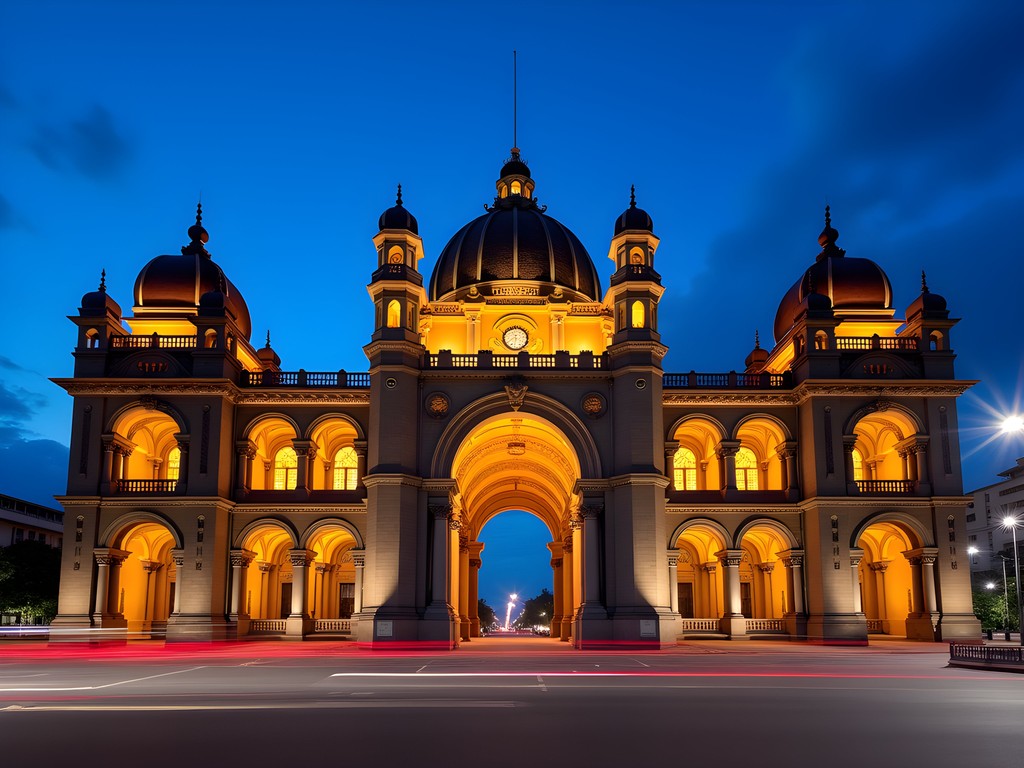
💡 Pro Tips
- Photograph CST Station during blue hour (30-45 minutes after sunset) for the best lighting
- Use a 24mm or wider lens to capture the full grandeur of the station facade
- Look for reflections in puddles after rain for creative compositions of Art Deco buildings
Coastal Mumbai: Marine Drive & Worli Fort
Mumbai's relationship with the Arabian Sea defines its character, and nowhere is this more photographically evident than along the sweeping curve of Marine Drive. Known locally as the 'Queen's Necklace' for the way the streetlights create a luminous string of pearls at night, this 3.6-kilometer boulevard offers distinctly different photographic opportunities throughout the day.
During my stay, I developed a routine of early morning walks along Marine Drive to capture fishermen preparing their boats against the backdrop of Mumbai's skyline. The morning light here is sublime, especially when monsoon clouds linger, creating dramatic skies. A graduated ND filter proved invaluable for balancing exposure between bright skies and darker foregrounds.
Marine Drive transforms completely at sunset, when locals gather to promenade, snack vendors set up shop, and couples find spots along the seawall. This social tapestry creates rich opportunities for environmental portraiture. I found that my 35mm lens provided the ideal field of view—wide enough to include context but tight enough to isolate interesting human moments.
For a less frequented coastal perspective, I took a taxi to Worli Fort one afternoon. This often-overlooked 17th-century structure built by the British offers panoramic views of the Bandra-Worli Sea Link, Mumbai's iconic cable-stayed bridge. Timing is crucial here—I arrived about an hour before sunset to scout compositions, then photographed through golden hour as the bridge began to illuminate against the darkening sky.
The juxtaposition of the centuries-old fort walls against the ultra-modern bridge structure creates a compelling visual narrative about Mumbai's evolution. From a technical perspective, I bracketed exposures heavily here, as the dynamic range between the shadowed fort and the bright sky exceeds what even the best sensors can capture in a single frame.
During my exploration of coastal Mumbai, I was reminded of my childhood near the Great Lakes in Canada—there's something universally compelling about the meeting of urban development and natural water bodies. Though the Arabian Sea is far warmer than Lake Ontario in January (as I discovered during an impromptu wade near Chowpatty Beach), the human connection to water transcends cultural boundaries.
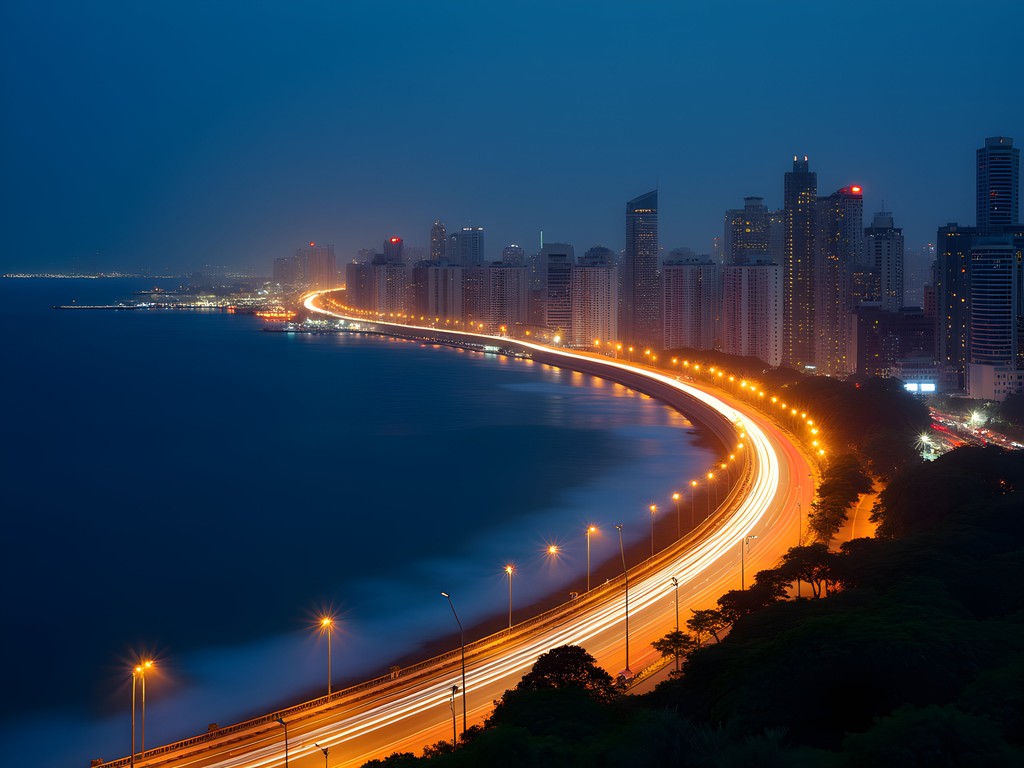
💡 Pro Tips
- Visit Marine Drive at both sunrise and sunset for completely different photographic experiences
- Use a telephoto lens to compress the curve of the bay and emphasize the string of lights
- Include human elements along the seawall for scale and storytelling
Sacred Spaces: Banganga Tank & Haji Ali Dargah
Mumbai's religious diversity is reflected in its sacred architecture, offering photographers glimpses into centuries of spiritual tradition. Banganga Tank in Walkeshwar provided my most unexpectedly moving photographic experience in Mumbai. This ancient water tank surrounded by temples and shrines dates back to the 12th century and feels like a village within the metropolis.
I arrived at Banganga shortly after sunrise, when devotees were performing morning rituals and the light slanted dramatically across the stone steps (ghats) leading down to the water. The square tank with its central shrine creates natural framing opportunities, while the surrounding narrow lanes reveal intimate vignettes of daily life. For this location, I switched between my standard zoom for environmental context and a 50mm prime for portraits and details.
The spiritual atmosphere here is palpable, and I found myself slowing down, taking fewer but more considered photographs. When an elderly priest noticed my interest in a small shrine's intricate carvings, he invited me to observe a brief ceremony, an interaction that reminded me why travel photography has become so central to my life after decades in dentistry—it's these human connections across cultural boundaries that enrich our understanding.
In stark contrast to the ancient Banganga, the Haji Ali Dargah presents a different photographic challenge. This white marble shrine sits on a tiny islet connected to the mainland by a narrow causeway that disappears at high tide. Checking tide tables is essential—I visited during low tide in late afternoon when the causeway was fully accessible and the white marble gleamed in the golden light.
The approach to Haji Ali Dargah offers compelling compositional possibilities, with the causeway creating a strong leading line toward the structure. Once inside the complex, photography becomes more restricted, and sensitivity is paramount. I limited myself to architectural details and respectful wide shots of the courtyards, always seeking permission before photographing people at worship.
Both locations require modest dress (I carried a lightweight scarf to cover my head when appropriate) and removal of shoes in certain areas. My years of travel photography have taught me that respect opens doors—quite literally in sacred spaces—and yields more authentic images than rushing in with cameras blazing.
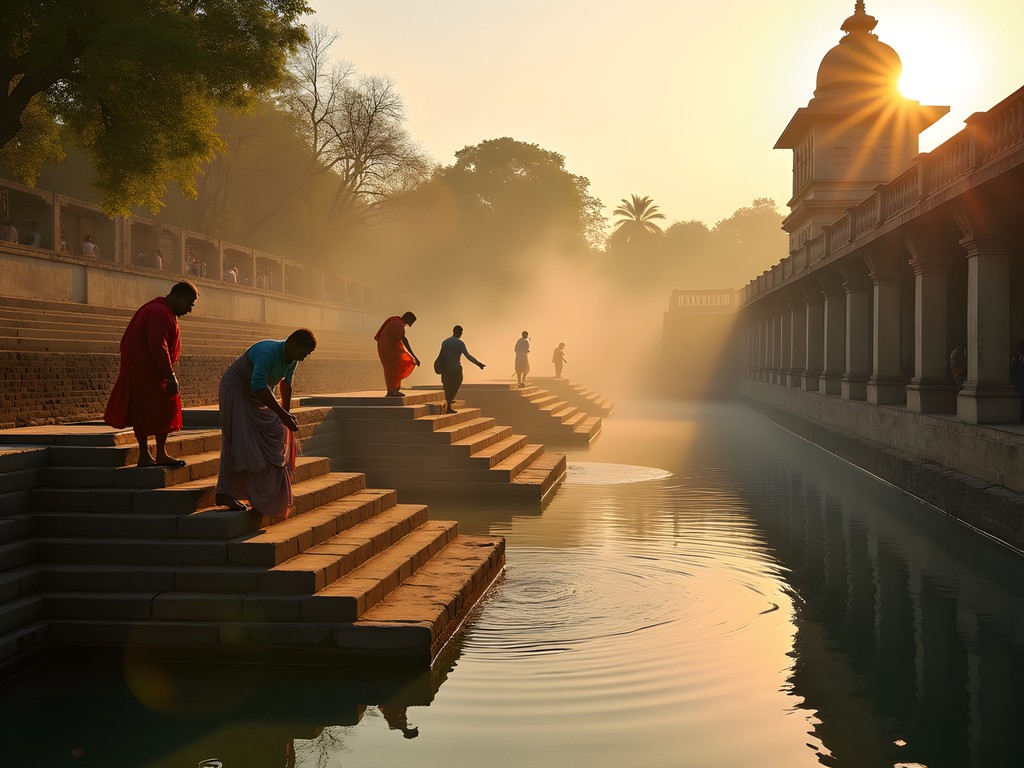
💡 Pro Tips
- Visit Banganga Tank early morning for the best light and spiritual activities
- Check tide tables before visiting Haji Ali Dargah to ensure the causeway is accessible
- Bring a small cloth bag to carry your shoes when they must be removed at sacred sites
Urban Exploration: Dharavi & Dhobi Ghat
Photography in Mumbai's densely populated communities requires particular sensitivity and ethical consideration. After considerable research, I chose to visit Dharavi with a community-based tour organization that reinvests proceeds into local education initiatives. This approach provided context and ensured my presence was welcomed rather than intrusive.
Dharavi, often mischaracterized simply as 'Asia's largest slum,' revealed itself as a complex economic powerhouse with thriving industries and tight-knit communities. Photographically, I focused on the impressive recycling operations and skilled artisans rather than perpetuating poverty stereotypes. The narrow lanes create challenging lighting conditions with small patches of bright sky contrasting against shadowed interiors.
For this environment, I used my compact camera which with its understated design and excellent low-light capabilities allowed me to work discreetly. The fixed 28mm lens proved ideal for the close quarters. Rather than photographing people directly, I often focused on hands at work, environmental details, and products being created—telling the story of industry and skill rather than hardship.
Dhobi Ghat, Mumbai's famous open-air laundry, presents different photographic opportunities. Best viewed from the bridge on Dr. E. Moses Road, this vast complex of washing pens offers a mesmerizing geometric pattern from above. Morning visits provide the most activity as washermen (dhobis) beat laundry against stone flogging slabs and hang colorful fabrics to dry in the sun.
While the elevated view is compelling, I arranged (through my hotel concierge) to visit the facility at ground level with a local guide. This perspective revealed the physical labor involved and the sophisticated organization system that ensures thousands of garments return to their rightful owners. From a photographic standpoint, the contrast between the repetitive concrete washing pens and the organic shapes of draped laundry creates visually rich compositions.
As in many working environments globally, small gratuities were appreciated when photographing individuals at Dhobi Ghat. I brought along printed photographs from my previous day's shooting to give as gifts—a practice I've found creates goodwill and genuine connections across language barriers. After all, a photograph should be an exchange, not an extraction.
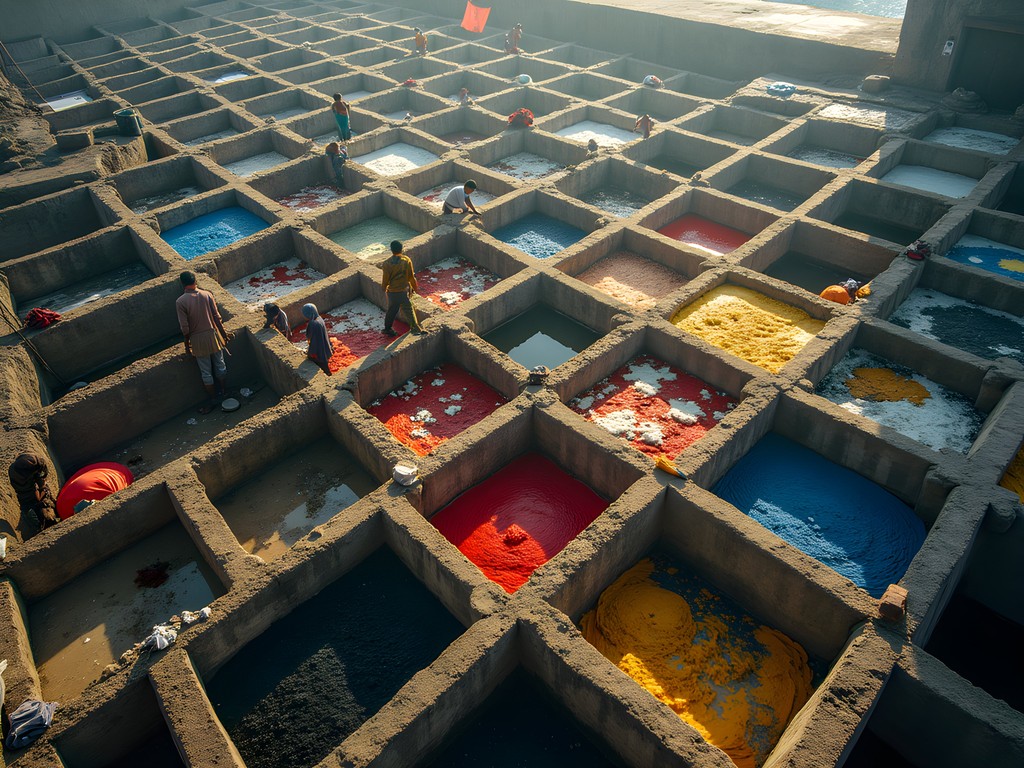
💡 Pro Tips
- Use a community-based tour organization when photographing in sensitive areas like Dharavi
- Focus on craftsmanship and industry rather than poverty when documenting working communities
- Bring a polarizing filter to manage reflections from wet surfaces at Dhobi Ghat
Final Thoughts
Mumbai defies simple photographic categorization—it's a city that demands you engage with its complexities and contradictions. After a week of intensive shooting across these locations, I returned to Frankfurt with nearly 3,000 images and a profound appreciation for this dynamic metropolis. The best photography here comes not from technical perfection but from patience, respect, and genuine curiosity about the stories behind the visuals. Whether you're drawn to colonial architecture, spiritual traditions, or the rhythm of daily life, Mumbai offers endless visual narratives waiting to be discovered. I've barely scratched the surface in this guide, and I'm already planning my return during monsoon season to capture an entirely different mood. Until then, I'll be sorting through my images, each one a portal back to Mumbai's intoxicating energy and light. If you're planning your own photographic journey to this remarkable city, remember: slow down, engage sincerely with locals, and allow yourself to be surprised by what appears in your viewfinder.
✨ Key Takeaways
- Early morning (5:30-7:30 AM) offers the best light and fewer crowds at major landmarks
- Respect and small purchases go a long way when photographing in markets and communities
- A mix of wide-angle and normal focal lengths covers most Mumbai photography scenarios
- Consider ethical implications when photographing in economically diverse areas
- Weather and timing (including tides for coastal locations) significantly impact photographic opportunities
📋 Practical Information
Best Time to Visit
November to February (winter)
Budget Estimate
₹25,000-35,000 ($300-425) for a week excluding accommodation
Recommended Duration
Minimum 5 days, ideally 7-10 days
Difficulty Level
Intermediate - Requires Comfort With Crowded Urban Environments And Variable Conditions
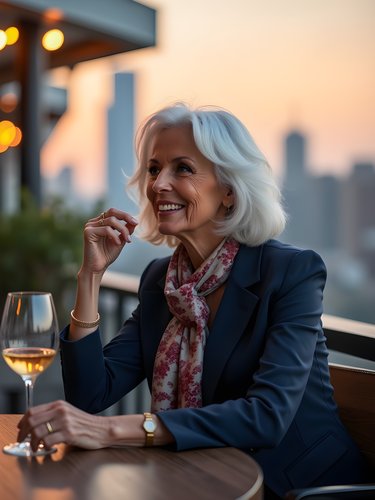

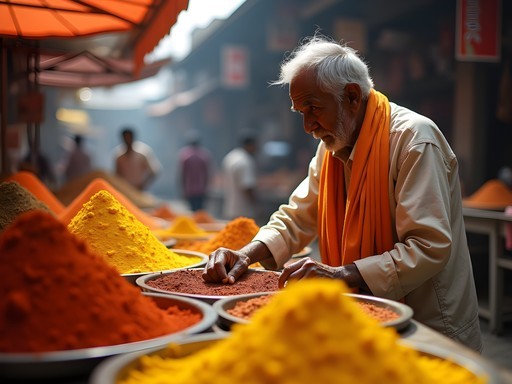
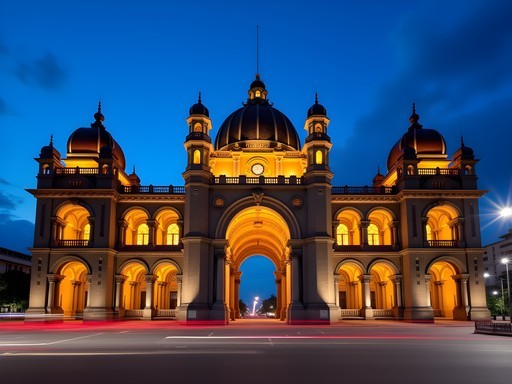
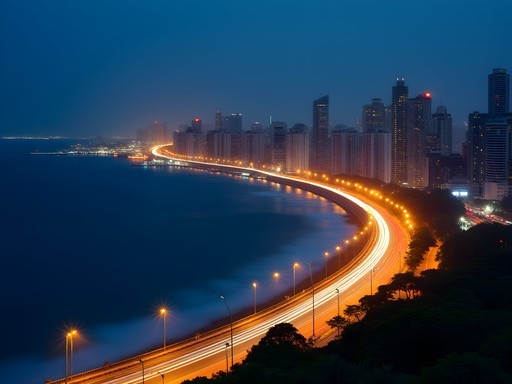
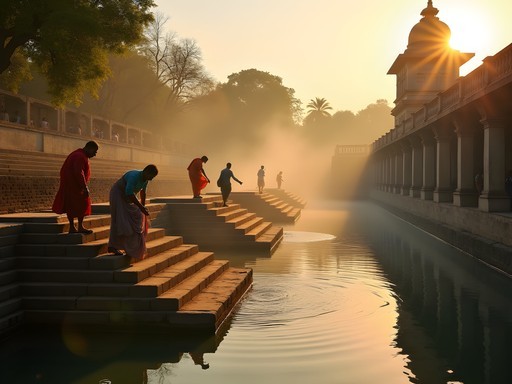
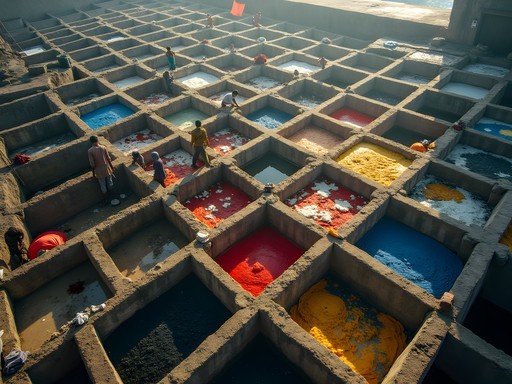


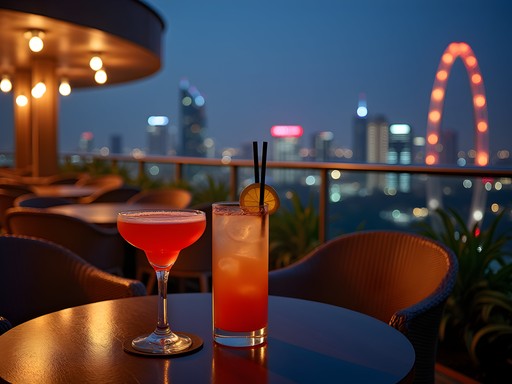
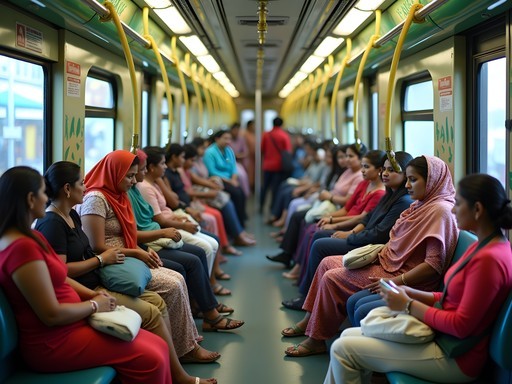






Comments
Sophia Gomez
Katherine, your dental conference turned photography expedition is exactly what happened to me last year when I was in Mumbai for a marketing workshop! I ended up extending my stay by three days just to photograph the city. One thing I discovered that might help others: the local trains are actually perfect for street photography if you go mid-morning after rush hour. The CST Station has this gorgeous light streaming through the windows around 10am that creates the most dramatic shadows. I'd also recommend Sassoon Docks for anyone wanting to capture authentic Mumbai life - it's chaotic and smelly but the fishermen and women sorting the day's catch make for compelling human interest photos. Just be respectful and offer to show them the images you've taken. Some of my favorite interactions happened this way!
globeway
Is Sassoon Docks safe for solo female travelers with camera gear?
Sophia Gomez
I went solo and felt fine, but I kept my gear minimal - just one camera, one lens. Go in the morning when it's busy with locals, not too early or late. Common sense applies!
hikingfan
Just wanted to add that Worli Fort at sunrise is absolutely magical - we had the place almost to ourselves last December. The fishermen heading out in their boats made for some incredible silhouette shots. One warning though: the local dogs can be territorial in the early morning, so bring some treats! Also found that most locals were super welcoming about being photographed as long as you asked first.
wintertime
Loved this post! The Art Deco district was my absolute favorite photography spot in Mumbai. Those pastel buildings along Marine Drive are incredible at sunrise when they catch the first light. Pro tip: grab a coffee from a street vendor and watch the city wake up. Pure magic!
backpackperson
Just booked my tickets to Mumbai after reading this!!! Can't wait to explore all these spots with my camera!!! Anyone know if it's safe for a solo female photographer? Any areas I should avoid?
wintertime
I went solo last year! Stick to well-populated areas after dark and dress modestly. I felt completely fine at all the locations Katherine mentioned. Marine Drive and Colaba are great even in evenings. Just use normal big city awareness!
backpackperson
Thank you so much! That's really reassuring to hear!
bluelife
Great post! I'm heading to Mumbai next month with just my smartphone. Any specific tips for mobile photography at these spots? Especially interested in those Art Deco buildings you mentioned.
Sophia Gomez
Not Katherine, but I was just there with only my iPhone! For the Art Deco buildings, the Marine Drive stretch is perfect around 4-5pm when the light hits them just right. Use the grid on your camera app to keep those straight lines aligned. And download a good editing app - I used Snapseed to bring out those architectural details later.
bluelife
Thanks for the tips! Definitely getting Snapseed before I go.
Bella Harper
Your post brought back such wonderful memories, Katherine! When I visited Mumbai in my 50s, I was initially overwhelmed by its intensity. But once I embraced the chaos, it became a visual feast. The Dhobi Ghat was particularly meaningful to me - watching those men and women working so diligently amid a sea of colorful fabrics. I sat for hours just observing and occasionally photographing with their permission. One elderly gentleman even invited me to see his small living quarters and shared chai with me. These human connections often lead to the most authentic photographs. Did you find yourself drawn more to the architectural elements or the human stories during your stay?
Katherine Fisher
What a beautiful experience, Bella! I started with architecture (my comfort zone) but gradually found myself more drawn to the people and their stories. By the end, my favorite shots were definitely the candid human moments - like the elderly chess players near Hanging Gardens and the flower sellers at Dadar market.
Nicole Russell
Katherine, I'm obsessed with your Marine Drive shots! The way you captured that golden hour light is STUNNING. I visited Mumbai solo last year and felt completely safe wandering around with my camera, though I did keep my camera bag close in the busier areas. For anyone planning a trip, don't miss Kala Ghoda district - amazing street art and architecture that wasn't even on my radar until a local photographer tipped me off. Did you make it there?
Katherine Fisher
Thanks Nicole! Yes, I spent an afternoon in Kala Ghoda - those colonial buildings against the contemporary art installations make for such interesting compositions. Great tip!
globeway
These shots are incredible! Adding Mumbai to my bucket list now.
happyphotographer
Your Marine Drive long exposure is stunning! What settings did you use to get that silky water effect while keeping the skyline sharp?
Katherine Fisher
Thank you! I used f/11, ISO 100, and a 30-second exposure with my ND filter to get that smooth water effect. A sturdy tripod was essential - the sea breeze can be surprisingly strong!
freechamp
Just got back from Mumbai last month and hit up about half these spots! The Gateway of India was packed with tourists but still worth it for the shots. Wish I'd known about Worli Fort though - completely missed that one. Did anyone else feel overwhelmed trying to photograph Crawford Market? So much happening at once!
Katherine Fisher
Crawford Market is definitely sensory overload! I found early morning (around 7am) was much calmer for photos. Glad you enjoyed the other spots!
freechamp
Ah, early morning would've been smart. We went midday and it was chaos (but the good kind).
Venture X
Premium card with 2X miles, $300 travel credit, Priority Pass